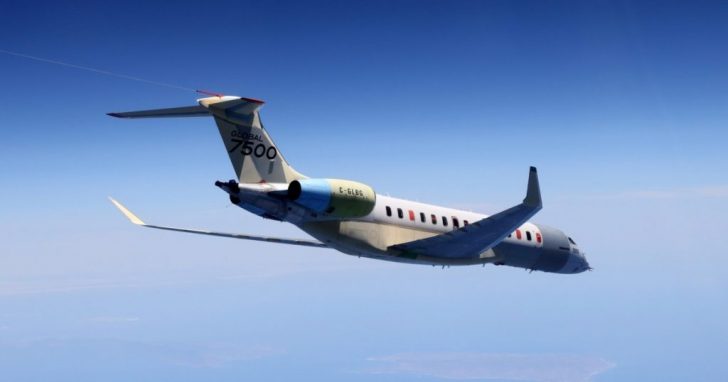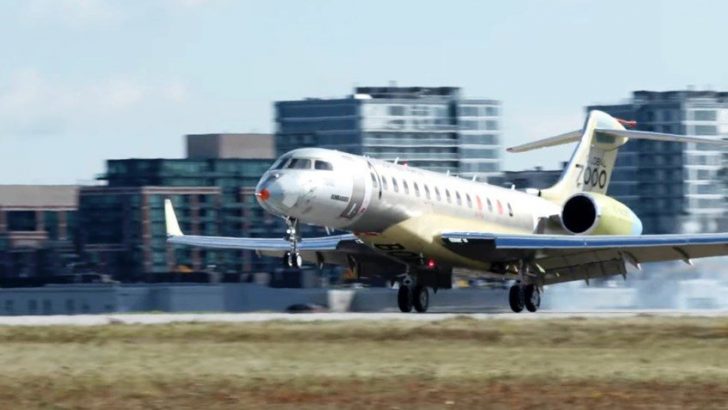On May 18, 2021, Bombardier’s FTV5, callsign “The Masterpiece,” etched its name in aviation history by becoming the first business jet to break the sound barrier. This groundbreaking event, witnessed and recorded by NASA’s F-18 chase plane, was not just a one-time event.
The FTV5 made repeated supersonic test flights, proving that Bombardier’s engineering prowess had reached unprecedented heights. This achievement is part of the development process for the Global 8000, the fastest civil aircraft since the legendary Concorde, with a top speed of Mach 0.94.
But what exactly makes the FTV5 “The Masterpiece,” and how did it manage to go where no other business jet has gone before?
Bombardier’s FTV5 is More Than Just a Test Aircraft
FTV5 is not just another test aircraft. It is a symbol of innovation and bold ambition. Designed and developed by Bombardier’s elite Flight Test team, FTV5 was built with one goal in mind: to push the boundaries of what is possible in business aviation. Its sleek design and cutting-edge technology made it the perfect candidate for this historic mission.

Business jets are typically known for luxury and comfort, not for high-speed performance. FTV5 changed all that, redefining what a business jet can be.
The test flights were a vital part of Bombardier’s mission to develop the Global 8000. While the world was already impressed with the Global 7500, which set new standards for range and performance, Bombardier wanted to push the limits even further. The FTV5 was the key to unlocking that potential.
What Does Breaking the Sound Barrier Mean for Aviation?
Breaking the sound barrier is no small feat, especially for a business jet like the FTV5. The sonic boom created by an aircraft moving faster than the speed of sound is often associated with military jets, not civilian aircraft. The FTV5’s accomplishment marks a turning point in business aviation. Thus, showcasing that high performance can coexist with luxury and comfort.
The future of private jet travel may not just be about getting to your destination in style, but getting there faster than ever before.

It opens up exciting possibilities for future business jets that could one day make supersonic travel a regular part of the private jet experience.
FTV5 and the Development of the Global 8000
The FTV5’s supersonic achievement was not just a milestone for the aircraft itself. It was a major step forward in the development of the Global 8000. Bombardier had already established a reputation for pushing the limits of performance with the Global 7500, but the Global 8000 aimed to take that even further.
With a top speed of Mach 0.94, it is set to be the fastest civil aircraft since the Concorde. However, Bombardier was not content with just that. The FTV5’s test flights gave Bombardier invaluable data to refine and perfect the Global 8000’s design.
While the Global 8000 may not regularly fly at supersonic speeds in commercial operations, the fact that its test aircraft could do so demonstrates the aircraft’s overall robustness and performance potential.

